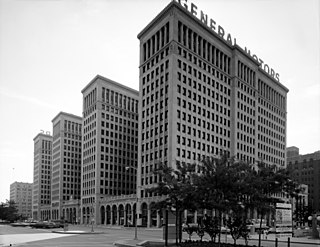
The General Motors streetcar conspiracy refers to the convictions of General Motors (GM) and related companies that were involved in the monopolizing of the sale of buses and supplies to National City Lines (NCL) and subsidiaries, as well as to the allegations that the defendants conspired to own or control transit systems, in violation of Section 1 of the Sherman Antitrust Act. This suit created lingering suspicions that the defendants had in fact plotted to dismantle streetcar systems in many cities in the United States as an attempt to monopolize surface transportation.
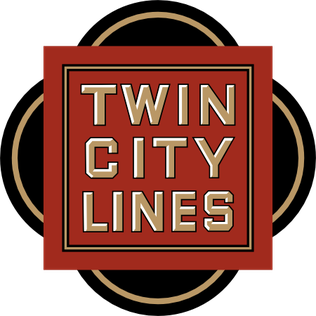
The Twin City Rapid Transit Company (TCRT), also known as Twin City Lines (TCL), was a transportation company that operated streetcars and buses in the Minneapolis-St. Paul metropolitan area in the U.S. state of Minnesota. Other types of transportation were tested including taxicabs and steamboats, along with the operation of some destination sites such as amusement parks. It existed under the TCRT name from a merger in the 1890s until it was purchased in 1962. At its height in the early 20th century, the company operated an intercity streetcar system that was believed to be one of the best in the United States. It is a predecessor of the current Metro Transit bus and light rail system that operates in the metro area.

William Gibbs McAdoo Jr. was an American lawyer and statesman. McAdoo was a leader of the Progressive movement and played a major role in the administration of his father-in-law President Woodrow Wilson. A member of the Democratic Party, he also represented California in the United States Senate.

Old Pueblo Trolley is a non-profit, educational corporation based in Tucson, in the U.S. state of Arizona, that is dedicated to the preservation of Arizona's mass transit history. The name also commonly refers to the heritage streetcar line which OPT began operating in 1993, on which service is currently indefinitely suspended. OPT consists of three divisions that each fill a specific role in preserving the state's mass transit history. The divisions are the Street Railway Division, Motor Bus Division and the Museum Division.

The Denver Tramway, operating in Denver, Colorado, was a streetcar system incorporated in 1886. The tramway was unusual for a number of reasons: the term "tramway" is generally not used in the United States, and it is not known why the company was named as such. The track was 3 ft 6 in narrow gauge, an unusual gauge in the United States, but in general use by railways in Japan, southern Africa, New Zealand, and Queensland, Australia.
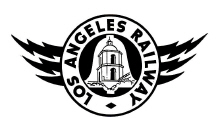
The Los Angeles Railway was a system of streetcars that operated in Central Los Angeles and surrounding neighborhoods between 1895 and 1963. The system provided frequent local services which complemented the Pacific Electric "Red Car" system's largely commuter-based interurban routes. The company carried many more passengers than the Red Cars, which served a larger and sparser area of Los Angeles.

Culver Depot, also called Culver Terminal or Culver Plaza, was a railroad and streetcar terminal in Coney Island, Brooklyn, New York City, United States, located on the northern side of Surf Avenue near West 5th Street. It was just north of the boardwalk, near the former Luna Park amusement complex, and across from the current New York Aquarium. Originally built by the Prospect Park and Coney Island Railroad for the Culver surface line, it later became a major terminal for the Brooklyn Rapid Transit Company (BRT).

The Milwaukee Electric Railway and Light Company, also referred to as the Milwaukee Interurban Lines or TMER&L, is a defunct railroad that operated in and around Milwaukee, Wisconsin. It was the largest electric railway and electric utility system in Wisconsin, and combined several of the earlier horsecar, steam dummy, and streetcar lines into one system. Its Milwaukee streetcar lines soon ran on most major streets and served most areas of the city. The interurban lines reached throughout southeastern Wisconsin. TMER&L also operated the streetcar lines in Appleton, Kenosha, and Racine, as well as its own switching operations at the Port Washington and Lakeside power plants.

The General Strike of 1910 was a labor strike by trolley workers of the Philadelphia Rapid Transit Company that grew to a citywide riot and general strike in Philadelphia, Pennsylvania.

The Indianapolis streetcar strike of 1913 and the subsequent police mutiny and riots was a civil conflict in Indianapolis, Indiana. The events began as a workers strike by the union employees of the Indianapolis Traction & Terminal Company and their allies on Halloween night, October 31, 1913. The company was responsible for public transportation in Indianapolis, the capital city and transportation hub of the U.S. state of Indiana. The unionization effort was being organized by the Amalgamated Street Railway Employees of America who had successfully enforced strikes in other major United States cities. Company management suppressed the initial attempt by some of its employees to unionize and rejected an offer of mediation by the United States Department of Labor, which led to a rapid rise in tensions, and ultimately the strike. Government response to the strike was politically charged, as the strike began during the week leading up to public elections. The strike effectively shut down mass transit in the city and caused severe interruptions of statewide rail transportation and the 1913 city elections.

Knoxville Area Transit (KAT) is the operator of public transportation in Knoxville, Tennessee. Twenty-five routes operate. Service on KAT routes operate weekdays and Saturdays with routes 11, 12, 20, 22, 23, 31, 33, 34 and 41 and 42 offering Sunday service. All routes, except for routes 13,16, 19, 44 and 90 start at the Knoxville Station in Downtown. The Knoxville Trolley is a free shuttle service which provides service to the university and the downtown area. KAT formerly operated the transit service for the University of Tennessee, known as The T. In 2023, the system had a ridership of 2,332,800, or about 10,200 per weekday as of the third quarter of 2024.
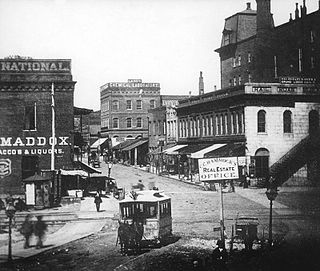
Streetcars originally operated in Atlanta downtown and into the surrounding areas from 1871 until the final line's closure in 1949.

The Knoxville riot of 1919 was a race riot that took place in the American city of Knoxville, Tennessee, on August 30–31, 1919. The riot began when a lynch mob stormed the county jail in search of Maurice Mays, a biracial man who had been accused of murdering a white woman. Unable to find Mays, the rioters looted the jail and fought a pitched gun battle with the residents of a predominantly black neighborhood. The Tennessee National Guard, which at one point fired two machine guns indiscriminately into this neighborhood, eventually dispersed the rioters. Headlines in the immediate aftermath stated five people were killed, while the Washington Times reported "Scores dead." Other newspapers placed the death toll at just two, though eyewitness accounts suggest it was much higher.
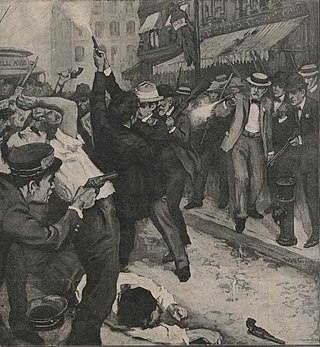
The St. Louis streetcar strike of 1900 was a labor action, and resulting civil disruption, against the St. Louis Transit Company by a group of three thousand workers unionized by the Amalgamated Street Railway Employees of America.

The 1877 St. Louis general strike was one of the first general strikes in the United States. It grew out of the Great Railroad Strike of 1877. The strike was largely organized by the Knights of Labor and the Marxist-leaning Workingmen's Party, the main radical political party of the era.
The Saint John street railway strike of 1914 was a strike by workers on the street railway system in Saint John, New Brunswick, Canada, which lasted from 22–24 July 1914, with rioting by Saint John inhabitants occurring on 23 and 24 July. The strike shattered the image of Saint John as a conservative town dominated primarily by ethnic and religious divisions, and highlighting tensions between railway industrialists and the local working population.

Public transit has taken numerous forms in Columbus, the largest city and capital of Ohio. Transit has variously used passenger trains, horsecars, streetcars, interurbans, trolley coaches, and buses. Current service is through the Central Ohio Transit Authority's bus system, numerous intercity bus companies, and through bikeshare, rideshare, and electric scooter services.

The 1910 streetcar strike was a union protest against labor practices by the Columbus Railway and Light Co. in Columbus, Ohio in 1910. The summertime strike began as peaceful protests, but led to thousands rioting throughout the city, injuring hundreds of people.

The 1917 Twin Cities streetcar strike was a labor strike involving streetcar workers for the Twin City Rapid Transit Company (TCRT) in the Minneapolis–Saint Paul metropolitan area of the U.S. state of Minnesota, popularly known as the Twin Cities. The initial strike lasted from October 6 to 9, 1917, though the broader labor dispute between the streetcar workers and the company lasted for several months afterwards and included a lockout, a sympathetic general strike, and months of litigation before ending in failure for the strikers.
Cornelius C. Howell was an American businessman and politician, active in Ohio, Colorado, and Tennessee. He was prominent in the development of Leadville, Colorado and Findlay, Ohio, and later established himself in Knoxville, Tennessee, where he took over a portion of the city's streetcar system and was with William Gibbs McAdoo one of the two key antagonists in the so-called Battle of Depot Street in that city in 1897. He was elected to the Tennessee state senate in 1900 from Knox County as a Republican.



















